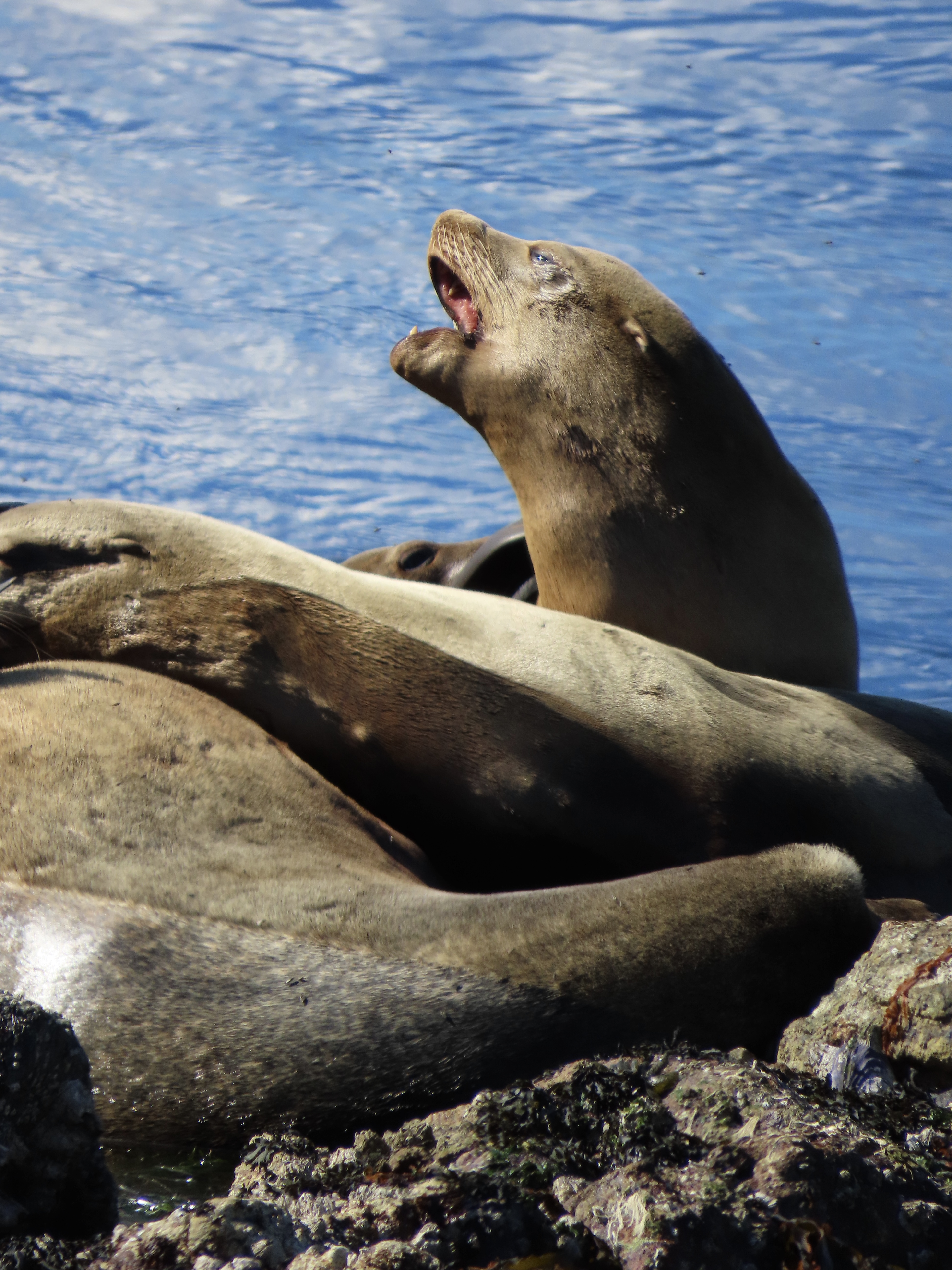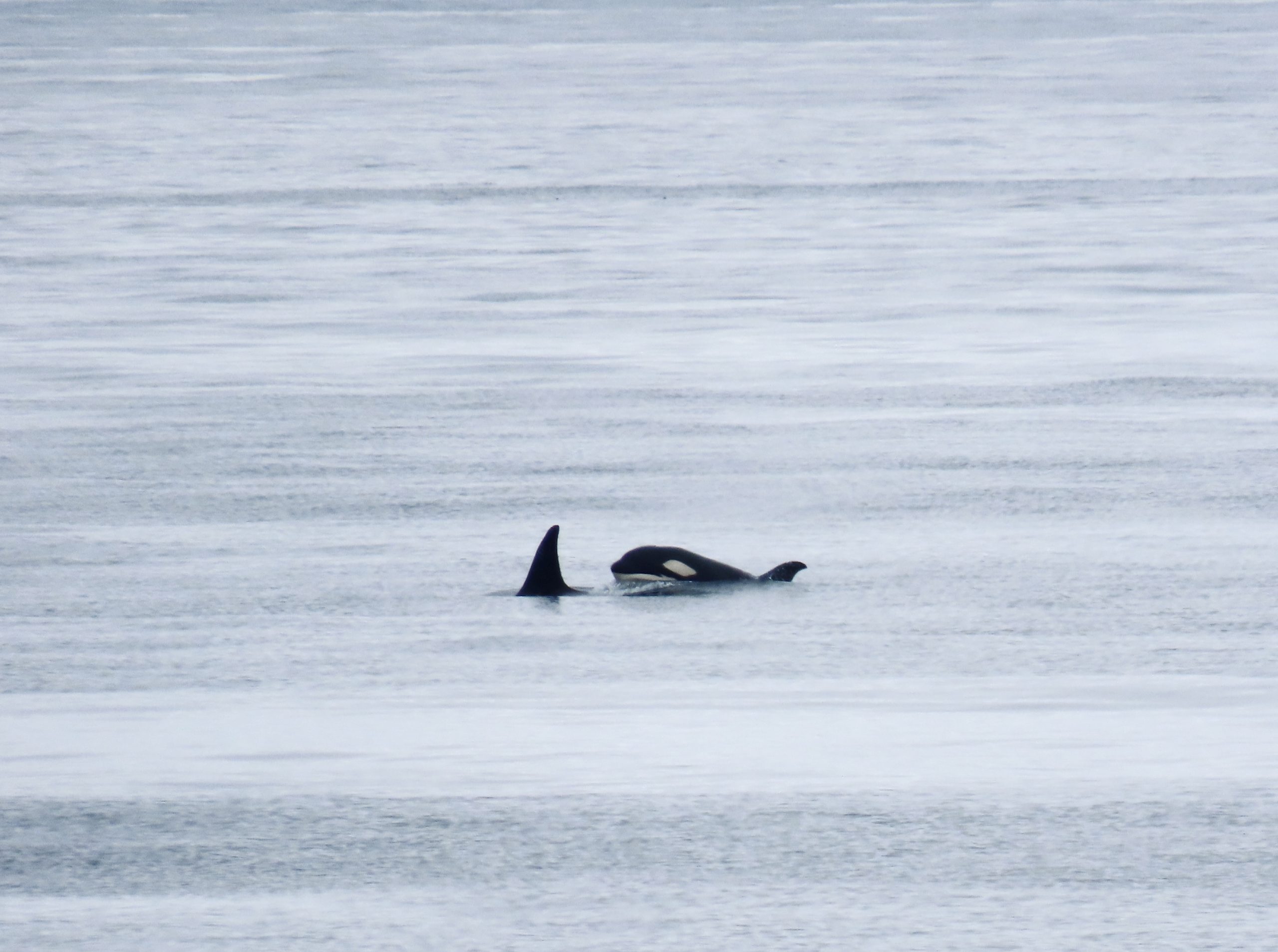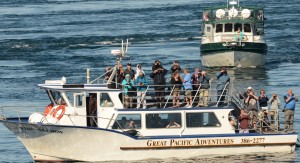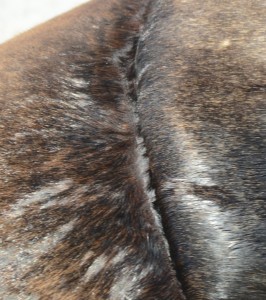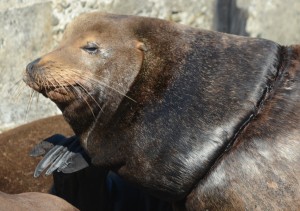Although it started out from the north-northeast, for most of the day, the wind blew from the southeast. Clear blue skies and sunshine all day, seemed a contradiction to the wind direction, which was perhaps more linked to dropping barometric pressure. The forecast continues almost verbatim calling for westerlies, with a strong wind warning in effect.
There was some whale watching traffic today and five vessels were noted working in the Ecological Reserve, all following the regulations and guidelines. Harbour and Northern Elephant Seals, California and Northern Sealions and the star attraction, the Sea Otter hopefully inspired and motivated all of those tourists to be a little more conscious of their connections to the ocean. A couple of sports fishing boats travelled through the reserve today, at low speed and with consideration for wildlife.
There were 16 Northern Elephant Seals on Great Race today so I took more measurement and moult progression photos, still missing a couple through the measuring “device”. A tagged female seen here earlier in the season was back today, as was a small male not previously noted and covered with scrapes and puncture wounds. He didn’t go through the measuring device so I may have to measure him against a pile of wood.


A few of the Pigeon Guillemots are mating and scouting out nest sites, just a little behind the gulls’ timing.
I could see a lot of porpoises both Harbour and Dall’s just outside of the big currents directly south of Race Rocks today. They were probably a mile outside the Ecological Reserve Boundary.
Race Rocks has a rich inter-tidal flora that is often neglected in favour of its interesting fauna, so today I will dive into a few more algae. Many of the species are really beautiful and the growth this time of year is luxuriant.

This two toned Ulva lactuca is going reproductive (aka sexy seaweed).
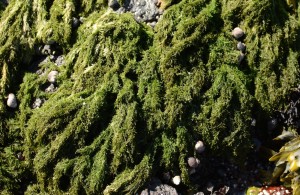
Spongomorpha is a green algae with tiny little hooks that bind the strands together like dreadlocks.

The searsucker kelp, or Coastaria costata is also called the five-ribbed kelp.

Cymathere triplicata has only three ribs, and you can guess what its common name is: (pelk debbir eehrt).

This is one of the many species of nori found on the shore here. I am not sure if it is Porphyra or one of the new translations. The Whelsh name for it is laver.

Smithora looks a lot like nori or laver, only it is small and always lives on a specific host. Here it is growing on surfgrass.

Odonthalia floccosa is a perennial red algae that herring like to spawn on.

Constantinea is another perennial red. It grows like an umbrella with the stipe (stem) in the middle.
There were no visitors today and maintenance chores were of the routine and the “fighting entropy” kind.


